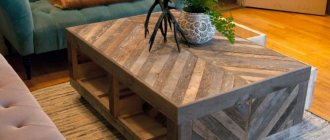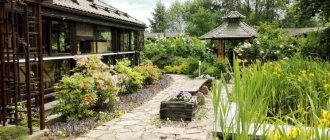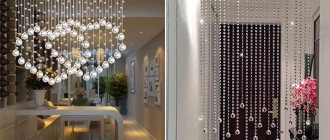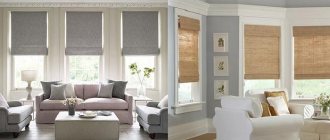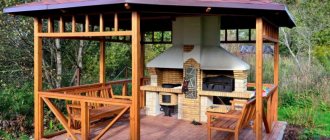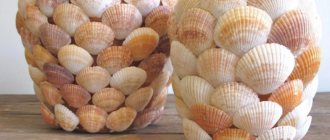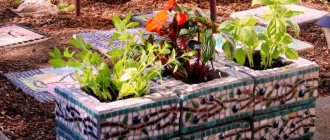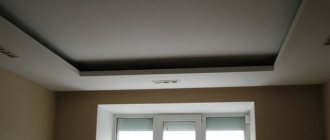Requirements for homemade furniture
Any furniture intended for outdoor use must meet a number of requirements:
- Sufficient size. When developing a drawing, it is imperative to take into account the anatomical features of the future user. To calculate the angle of the backrest, it is better to use furniture construction standards. Correctly selected parameters will allow you to avoid pain in the back and neck, while ensuring normal blood circulation and comfort during rest.
- The height of the sun lounger should be optimal, especially for young children.
- Almost all models of sun loungers have a rigid frame (most often made of wooden boards). However, you should take care in advance about sewing a soft mattress or pillows.
- The safety of homemade furniture is one of the most important requirements for a craftsman. During the final assembly of the structure, it is necessary to carefully inspect all parts for defects, chips, cracks, and signs of surface damage by pests. All existing irregularities should be removed by grinding the parts.
- Particular attention is paid to pre-impregnation of all wooden surfaces with an antiseptic, antipyrine and moisture-resistant composition. As the main impregnation, you can use a production solution or a mixture of drying oil, turpentine, and melted paraffin.
When assembling folding models, sufficient attention is paid to the condition of the rotary fittings (reliability of fastening, absence of manufacturing defects, possibility of subsequent replacement).
During operation, preventive inspections of fittings and fasteners should be carried out at regular intervals.
Wooden chaise lounge
What is needed to make such a chaise lounge? What materials will we need?
- Glued wood plate 20 mm wide
- For the base we will need some boards and beams
- Tools needed for manufacturing:
- Drills, preferably different sizes
- Four rollers
- Sheets for sanding our parts
- Components to further prevent destruction:
- Wood varnish
- Dye
Professionals recommend using coniferous wood as a material, as they are not “capricious” and are resistant to weather conditions.
Preparation of the drawing
The first and most important step for the master is to prepare a drawing of the future chaise lounge.
The following parameters must be indicated on paper:
- General dimensions of the sun lounger.
- The height of the main shield above ground level.
- Backrest angle.
- Dimensions of armrests, headrest (if provided for by this model).
For a folding chaise lounge, be sure to note the location of the fittings and its main components. Actually, the sun lounger itself has several mandatory elements: a middle and four side support posts, a support post under the back, a backrest bed, and a lower bed of the sun lounger.
In the photo of the chaise lounge, built with your own hands, you can see that there are diagonal slats between the side supports. These elements also perform a supporting function.
Chaise lounge with fabric
In addition to the usual wooden chaise lounge, you can make a seat with fabric. To produce it, we will also need wooden blocks, durable fabric, fastening materials, a pneumatic drill, glue and sandpaper.
For this type of chaise lounge, it is recommended to use tree species such as oak or birch.
The best fabric option in this case is denim or canvas, as they do not fade in the sun, and they are also not afraid of wet weather. When choosing such fabrics, your chaise lounge will retain its presentable appearance for many years.
Selection of base material
To obtain a high-quality product, the master should decide in advance on the consumables. In practice, a home chaise lounge can be made from wooden boards, plywood, PVC pipes, and profile pipes.
Each of the presented materials has a number of features that must be taken into account when carrying out construction work:
- Wood (timber, board) is most often used in work. This base is durable, safe, and does not contain toxic impurities.
- Assembling a wooden sun lounger with your own hands, as a rule, does not present any particular difficulties.
- However, you need to be very careful in choosing the type of raw materials used.
- You should immediately abandon conifers, which, when heated, begin to exude caustic resins.
- Wooden pallets can be used as the main frame. A particular advantage of using pallets is their convenient shape and strength.
- The next most popular material is PVC pipe. In independent work, you can use pipe sections remaining, for example, after repairs.
- PVC is rightfully recognized as a very optimal option for assembling a country chaise lounge. To make a comfortable lounger, it is enough to have welding skills.
The most rarely used material for assembling a sun lounger is a profile pipe.
All metal surfaces must be pre-treated with an anti-corrosion compound to prevent rust. For assembly you will need a grinder and welding.
Calculation of the required amount of material for construction: working tools
In order to make a wooden chaise longue with a fabric seat at home, we do not need complex and expensive tools, so even an inexperienced novice craftsman can make such a design for his summer cottage or country plot at the lowest cost.
To construct the backrest we will need wooden boards of the following sizes:
- Two pieces 19x38x1219 mm;
- One piece 19x38x610 mm;
- One piece 19x38x648 mm;
- One piece 19x64x610 mm.
To make the seat frame you need boards of the following sizes:
- Two pieces 19x38x1118 mm;
- Four pieces 19x38x603 mm;
- One piece 19x38x565 mm;
- One piece 19x64x565 mm.
To make a backrest support:
- Two boards 19x38x381 mm;
- One wooden round dowel with a diameter of 12 mm (length 648 mm).
To make a fabric seat we will need:
- Two pieces of awning, denim, camouflage, mattress or other durable fabric (a piece measuring 1372x578 mm);
- Two wooden dowels with a diameter of 12 mm (length 559 mm).
For fastening the structure:
- Four bolts with nuts size 6x50 mm;
- Twelve washers for nuts;
- Wood screws size 4x50 mm;
- Regular PVA glue or special glue for wood products.
The tools we will use are:
- Round file;
- Fine-grained sandpaper or sanding machine;
- Roulette;
- Electric drill;
- Grinder or saw (manual, electric or gasoline);
- Wood putty;
- Construction pencil or marker;
- Water-repellent varnish or paint;
- Hammer and screwdriver;
- Square.
Step-by-step assembly of a sun lounger
Having prepared all the necessary materials and tools, and prepared a drawing, you can proceed directly to work. The set of tools for making a wooden deck chair is standard and includes a jigsaw, tape measure, construction pencil, screwdriver, fasteners, and impregnation compounds.
Instructions on how to make a comfortable lounge chair with your own hands:
- Based on the existing drawing, parts are cut out for subsequent assembly.
- All wooden surfaces are inspected for defects.
- Irregularities and sharp gaps should be sanded.
- Next, impregnation is carried out with moisture-resistant and antiseptic compounds.
- The structure is assembled in the following sequence: a base of four supports, fastening the central or middle support post, fastening the diagonal jumpers. Self-tapping screws or dowels are used to connect adjacent parts.
- It is necessary to make several grooves on the upper contour of the side slats, which will subsequently hold the lifting backrest in several positions. If there is only one position, then the groove must be prepared in the singular.
- The lower part of the stock consists of successive rows of wooden planks. The slats must be fastened on the back side of the stock so that the protruding parts of the screws do not injure human skin or cause discomfort.
The upper part of the bed (lifting backrest) is assembled as a separate fragment, to which a holding post is attached. The bottom bar of the rack must correspond in size to the prepared grooves.
After assembly, you can cover all surfaces with 2-3 layers of acrylic varnish or paint the chaise lounge with acrylic paints.
Detailed instructions for a do-it-yourself sun lounger
First, determine the size of your lounge chair. As a rule, the standard size is 60*190 centimeters. However, you can choose any other option that will suit your dimensions.
After determining the dimensions, you can safely begin making the seat. We will assemble the base from the prepared wooden beams. The beams must be connected to each other using metal corners to assemble the bed.
Depending on the size you choose, you should prepare the legs for the chaise lounge. As a rule, their size varies from five to ten centimeters in height. At a short distance from the edge of the base you need to attach the legs. Use long screws for fastening.
In the center of all legs, using screws measuring 3-5 centimeters, it is attached along a roller. Then prepare the slats. Use a jigsaw to cut out planks measuring 8*60 centimeters. Next, screw these strips to the base with a distance of 1-2 centimeters between them.
After you have assembled the frame, treat the chaise longue with special products to preserve your crafted item for many years. Once the products have dried, coat the chaise lounge with varnish or paint.
Sewing a soft cover
Having a soft pillow or mattress on a wooden chaise lounge will be a definite advantage.
- For tailoring, you should choose textiles very carefully.
- For ease of subsequent care, it is better to sew two covers: an inner and an outer removable cover.
- When dirty or before the winter season, the outer part can be washed without damaging the filling.
- The size of the pillow or mattress can vary, but as a rule, it should completely cover the lower and upper bed.
Sewing a mattress
An equally important part of the work is the choice of textiles, filling and sewing of the mattress. As a rule, for this purpose, a fabric is chosen from combined threads with the addition of acrylic. Such textiles are highly breathable, absorb moisture, and can easily withstand washing and cleaning without shrinking.
The most optimal filler is foam rubber or foam rubber (a more expensive option, but with an orthopedic effect).
Photo of a homemade sun lounger
Soft or hard?
The first question that needs to be decided is whether, so to speak, the landing surface of the chaise lounge will be hard or soft. On the one hand, this is determined by the purpose and nature of use of the product; on the other hand, the choice of soft/hard determines the choice of design of the chaise lounge. Its bed/seat can be either soft fabric or hard made of wooden planks. A soft bed, if done correctly, absorbs well, removes and, like a wick, evaporates grease; a soft chaise lounge is cheaper, easier to make (especially foldable), and takes up less storage space. But it’s unlikely that you’ll be able to fully relax in a soft sun lounger for more than 2-3 hours; why - see below. In general, in terms of the totality of its qualities, it is soft - the optimal chaise longue for a summer house (you won’t spend the day there anyway) and as a portable one, for example. for fishing, also see below.
A hard chaise lounge is more difficult to make, the materials for it will cost more, and you will need a fairly large room to store it in winter. But a hard chaise lounge can be extremely ergonomic: you can lie on it all day or have a quick and good rest after hard work. Provided that it is covered with a terry sheet or a blanket made of upholstery fabrics for cabinet furniture - flock, microfiber, etc. Otherwise, on a hot day you will have to get up, peeling your sweaty back off the sticky wood, which is not very pleasant.
Note: a hybrid of both, possessing almost all their positive qualities, but bulky - a chaise lounge on a tubular frame, see fig. But structurally and ergonomically, this product is closer to hammocks and rocking chairs.
Soft pair of chaise lounge-lounger-hammock-rocking on a tubular frame
Chaise lounge design
The compact chaise lounge is a light and simple bed that can be moved from place to place. The design assumes a slightly raised headboard, and the word “chaise lounge” is translated as “long chair.” This designation accurately characterizes the elongated seat that distinguishes the chaise longue. Furniture can also be folding or transformable, but a common option is a low chair-lounge with a raised back.
Sun loungers differ in shape, material, appearance
Kinds
The main parameter depending on which sun loungers are classified is the material. Wooden models that are easy to make yourself are in demand. Furniture can be simple, straight in shape, and bases that follow the contours of the body are very comfortable. Easy fixation of the back position, retractable shelves, comfortable armrests and stable legs make wooden chaise lounges comfortable and practical. The presence of wheels makes it easier to transport furniture. At the same time, wooden models are environmentally friendly, safe and durable.
A simple chaise lounge is comfortable and practical
Plastic models are distinguished by their affordable price, easy maintenance during use, convenience and versatility. The furniture is lightweight and the design options are varied. Simple sunbeds are affordable and optimal for a summer residence. Original designer models have a higher price and good characteristics.
Plastic furniture is very light
Wicker sun loungers have a metal frame on which a wicker fabric is stretched. The frame may also have a fabric base. Such models often have a folding design and are characterized by mobility and convenience. To create wicker models, natural or synthetic wicker and rattan are used. In models with a fabric base, durable and high-quality fabric is used.
Wicker loungers look impressive
Depending on the type of construction, sun loungers are classified into several types. The hanging option is in demand. It includes posts and base. An umbrella can complement the set, but in any case the seating area is suspended from the posts. Therefore, the supporting elements must be as reliable as possible and are often made of metal.
Hanging models are spectacular and comfortable
Folding models are made from various materials: wood, plastic, wicker, metal with a fabric base. The products are convenient because they are easy to fold and transport. This allows you to remove furniture in bad weather, as well as conveniently store the chaise longue. All rotating mechanisms of the design are reliable and safe.
Folding sun loungers are varied
The lounge chair is convenient because it allows you to sit as comfortably as possible, but without being in a “lying” position. The seat can be transformed, lengthening or shortening if necessary. The chairs can be folding or regular. The furniture is comfortable both inside the living space and in the country house or near the pool.
Massive lounge chairs are optimal indoors
Photo gallery: options
Comfortable sun loungers are varied and differ in appearance, which plays an important role when choosing. Photos of furniture allow you to determine the desired option.
The original base makes the chaise lounge unusual and stylish. The chaise longue-ottoman is best installed indoors.
Hanging models have an unusual appearance
A chaise lounge ottoman is optimal near the pool
Rocking lounger provides comfort Double curved lounger is comfortable but takes up a lot of space
Suspended options are reliable
Materials
Next we will look at how a wooden chaise lounge is made. Sun loungers with a metal base are much more labor intensive. The frame (frame) of a chaise lounge made of ordinary steel under normal operating conditions quickly corrodes, despite any painting, and profiles made of metals that are resistant to corrosion will cost more than very high-quality wooden blanks, see below. The only exception is a fishing chair (mass and size!); it is better to do it on a frame made of aluminum pipes, see for example. video:
Video: homemade deck chair for fishing
<
But the choice of material for a wooden sun lounger is also not easy. And the question immediately arises: solid wood or glued plywood? The first one is more solid, but it is more difficult to select material for it. A chaise longue made of glued plywood is more labor-intensive, but more technologically advanced, especially in the case of an anatomical chaise lounge; the material for it will cost less than high-quality wood.
Array
Ordinary timber for a deck chair is of little use - it is not resistant enough to regular alternating loads (houses and barns are not dragged from place to place, folded up and hidden for the winter). In terms of mechanical and chemical resistance, larch would be suitable for a sun lounger, but its wood, like that of other conifers, quickly fades and turns gray from solar ultraviolet radiation.
Among domestic hardwoods, oak and beech are suitable, provided they are impregnated 2-3 times with a water-polymer emulsion (WPE). The last name is not entirely clear, and the first is a bit long, so now EPE is going on sale under the name “Ecogrunt”. This is the same substance, suitable for impregnating anything even slightly porous - from concrete to soft wood.
Note: walnut and hornbeam, which are also quite resistant to mechanics, chemistry and light, are not suitable for outdoor furniture, because easily affected by pests.
Hevea
There would be no need to talk about tropical species like teak due to their high cost and the fact that in the Russian Federation they are supplied almost exclusively in products. However, recently, Hevea wood has appeared in sufficient quantities on the wood market. This Brazilian tree is known as the best rubber plant, but armies of Seringero suicide bombers no longer go into the wilds of the Amazon for “wild” latex. Hevea is grown on plantations in the humid tropics around the world, and when the trees become depleted from regular pruning, they are cut down and sold as timber; partially - dissolved into ornamental preparations.
Note: Why are the rubber miners - the Seringeros - suicide bombers? The Amazon is a veritable green hell, infested with deadly diseases and creatures. Here's an example - during World War II, when the need for natural rubber increased sharply, Ford Motor Co. alone. sent 30 thousand Seringeros to the Amazon jungle. Of these, according to official American data, 283 people survived (less than 1%). But, by the way, this hell is the main supplier of oxygen to the Earth’s atmosphere. All other tropical forests, together with the taiga, provide almost three times less, and the ocean, as it turns out, consumes almost all of its oxygen itself.
The advantages of Hevea as an ornamental tree are undeniable:
- The price per cubic meter of small pieces of Hevea (plank, block, strip) is competitive with seasoned oak.
- Hevea wood is resistant to chemical influences, light, and is not damaged by pests.
- Hevea is almost as strong as oak, but at the same time it is easy to process and allows you to make carvings as fine as walnut.
- Hevea wood has a noble tone and texture, see fig. on right.
Solid Hevea furniture details - Products made from solid hevea do not need impregnation, staining, polishing or varnishing - just sand it and you're done.
There is only one drawback of Hevea wood: its trees on plantations are depleted when they are young, at the age of 5-10 years. Therefore, Hevea does not enter the market as long construction pieces. But for the manufacture of a sun lounger this is not essential.
Note: if you go to furniture stores, you will find that 10,000 rubles. for a living room chair made of hevea this is not quite expensive. But then it turns out that a dining table made from the same set, which uses 10-15 times more wood, costs 18,000 rubles. Yeah! We are looking on the Internet to see if Hevea blanks are sold. It turns out yes, and the prices are reasonable.
Plywood
Here, too, there is a choice: bakelized birch, moisture-resistant (aviation grade)? It is very expensive, does not bend well and often cracks when bent. Construction pine? It fades and turns gray in the light, like any coniferous tree, and is also not very cheap. Packaging made from waste wood (alder, aspen, poplar)? It’s cheap, it bends, figuratively speaking, even if you knit it with knots. Is it fragile, not resistant to mechanics, chemicals, or pests? After some additional processing, which is quite doable at home (see below), it will be quite suitable for a chaise lounge. Especially for anatomical ones, the design of which has curved parts, and concentrated loads are much smaller in magnitude than in soft ones.
Impregnation and sawing
It is obvious that packaging plywood needs to be impregnated for strengthening and moisture resistance. It is not difficult to guess that the best impregnation in this case is the same Eco-soil (EPO): cheap, safe (you can work in a living room with children), and quite effective for a sun lounger. Impregnate with a plaster brush 2-3 times on each side with an interval of 15-30 minutes and dry for a day (at temperatures above 25 degrees and humidity up to 60%, you can dry overnight).
But the first secret is that you need to soak the whole sheet or part of it intended for the sun lounger. Yes, before sawing into parts. Why? Anyone who has ever worked with a jigsaw knows how much sawdust it produces and how it scatters + the pungent smell of burnt wood. Impregnated plywood generates much less dust and smell when sawed. It’s easier with a circular saw, but not everyone has one, it doesn’t make a curved cut, and all the same - the less sawdust, the better.
About the jigsaw
If you are just planning to purchase a jigsaw (which will come in handy in many cases), then, when you pick it up, do not cut straight away, practice on scraps and waste. A jigsaw is no less capricious than a manual one. The first cuts may generally go to the sides, then they will become slightly wavy. A laser marker is of no use - it gets lost literally in the first centimeters of a cut, even if you have a “cool” Bosch or Makita. But once you get your hands on your own, exactly your own, tool, your friends won’t believe that this was done by hand, and not on a cutting machine.
Plywood
The plywood parts will gain full moisture resistance after the impregnation has completely dried, after 2-3 days. But for the necessary strength they need to be glued together from strips of plywood. The best glue, again in this case, is PVA assembly glue. It is sold in construction stores under the names “Structural”, “Reinforced”, “PVA D2”. Its important advantage is comparatively, for example. with liquid nails and other nitro-based adhesives - non-dried PVA is washed off completely with water. If it gets on your clothes, wash it under the tap; on the carpet - wipe several times with a wet swab or use a washing vacuum cleaner.
Mounting PVA has a somewhat gelatinous consistency and takes a long time to dry to full strength, the same 2-3 days. According to conventional technology, the parts to be glued are kept until the glue becomes tack-free (this is approximately 20 minutes), and then under pressure for at least a day. If you take into account that gluing, say, beams 24 mm thick will require 4 strips of plywood 6 mm thick, and the home craftsman doesn’t have a lot of clamps and weights for weighting, then making a sun lounger can take a long time until you have to think about insulation, boxes/ screens for radiators, etc.
Not just nails
All the parts for a plywood chaise longue can be re-glued in one day, and the product itself can be assembled the next day if you use metal fasteners to hold the glued parts together with compression. But the heads of the usual self-tapping screws will either stick out in plain sight, or they will need to be puttied and painted over. Over time, they will rust, but the main thing is that a large number of thick ribbed fasteners will inevitably weaken the parts.
These problems will not arise if you use the so-called. finishing nails. They are also sold in construction stores, and if they say “No!” or they will look at you in surprise, explain: “Yes, these are the ones that are used to nail platbands to MDF doors! Nails for platbands!
Finishing nails
“Cash” nails are made of bronze (these are more expensive) or high-quality stainless steel; their heads and necks are shaped somewhat differently than those of conventional construction ones. Therefore, finishing nails very rarely bend and do not prick the material, even if the hammer is in the hands of a “full teapot”. And one more thing - finishing nails are anodized in different colors, so you can choose ones that are invisible on your material (see figure). Finishing nails are available in different sizes; the most popular ones are from 12x0.6 to 25x1, which is just suitable for assembling plywood parts using plywood.
Gluing
Gluing plywood parts from strips using finishing nails is done as follows. way (see also fig.):
Assembling plywood parts using plywood using finishing nails
- Let's say we need a beam 25 mm thick - we prepare 4 strips of plywood 6 mm thick, the missing 1 mm will be provided by layers of glue;
- Lubricate with glue and put 3 strips together (on the left in the figure), there is no need to keep it until it sticks;
- We fasten with finishing nails 15x0.7 (0.8) in a snake with a pitch of 200-300 mm, but at least 3 attachment points per part. If our beam is up to 600 mm long, only 3 nails will be needed, arranged in the form of an extended letter Λ, in the center in the figure;
- Similarly, attach the last strip on the opposite side. We place the attachment points in a mirror image to the original one, i.e. the nail heads form an extended V;
- Using a wet swab, remove the squeezed-out glue residues;
- We put the assembled workpiece aside to dry and make the next one.
Note: the workpiece assembled in this way is, in principle, suitable for final processing immediately, only wet glue stains the tool.
What if it’s crooked?
Bent plywood parts are also assembled in a similar way, but they cannot be over-dried after impregnation: for 1-2 days, plywood impregnated with EPE remains quite plastic, but then it becomes stiffer and more fragile than “raw” plywood.
The technology for manufacturing bent parts of a deck chair deck depends on how this deck itself is assembled: framed transversely or longitudinally in place, see below. The longitudinal flooring is quickly assembled directly on the finished product frame; transverse along the frame is much more labor-intensive. The strips of longitudinal flooring are nailed one after another directly to the supporting beams of the frame with the same finishing nails. The finished product is dried for a day, sanded, varnished or painted - and it’s ready. To assemble the parts (lamellas) of the transverse flooring, you need to prepare a plaz - a flat wooden panel of a suitable size. Then:
- On the plaza, the contours (profiles) of the flooring lamellas are marked. Because The lamellas cannot be removed from the plaza until the glue has completely dried; it is advisable to knock off as many profiles as needed at once, i.e. the plaza needs to be large enough;
- The plaza is covered with transparent PE film;
- Wooden blocks - rats (this is the technical term) - are nailed along the lines of the lamella profiles. The rats are placed on one side of the profile line in those places where the frame support beams will be under the slats. The height of the rat is equal to the width of the lamella; thickness – the thickness of the beam.
- The first strip of plywood is simply nailed sticking to the rats with finishing nails;
- Subsequent strips are lubricated with glue before attaching;
- After 2-3 days (in this case, you need to wait until the glue is at least 85% cured), the blanks, along with the rats, are torn off from the plaza;
- The rats are knocked down or (better) carefully torn off with a sharp nail puller;
- The oblique/bent ends of the nails are cut off, and the straight ends are used to attach the slats to the beams.
Making a soft chaise longue
The easiest thing to do for a summer cottage, fishing, and perhaps a free beach nearby is a soft lounge chair. Its fabric bed is made of tarpaulin or other durable, resistant cotton fabric. Linen canvas is of little use - it is durable, but rather rough, but at the same time slippery, which can result in abrasions on the body. Furniture flock and microfiber are excellent, but quite expensive.
Typical dimensions of a universal (see above) soft chaise lounge are given in the figure:
Dimensions and frame design of a universal soft chaise longue
But the design shown there has a highlight: no need for plumbing work and simplified carpentry. The parts of the seat-back camber adjuster (highlighted in bluish-gray on the right in the figure) are wooden because the oak (or beech) locking rod does not rest on holes at points, as usual, but on slats along the entire length; the rest of the metal fasteners are ready-made purchased (M6 bolts with press-washer heads and nuts for them). By arranging the adjuster racks differently or simply filling them more, you can achieve any limit of camber adjustment and the number of its stages from those indicated above. Most of the structural parts are made of 40x25 timber, except for the headrest and popliteal ties - they are fastened with pairs of furniture confirming screws and therefore are made of boards 60x30 or 80x40 (in section).
Headrest
The Achilles heel of soft sun loungers is the head and popliteal support-ties. If the kneecap doesn’t really interfere, then the headrest is very felt by the neck or the back of the head. Therefore, the headrest of a soft chaise longue is almost always made double (which, by the way, increases the lateral rigidity of the structure) and is wrapped in the fabric of the bed, see fig. change at least every season.
Soft chaise lounge headrest
Note: drawings of a soft garden lounge chair of a classic design are given in the figure:
No adjustment
A soft garden chaise longue for one person or several of similar height, corpulence and build can be quickly made non-adjustable from scrap materials. An example of this kind of design is shown in the video:
Video: homemade chaise longue for the garden
One of the commentators on this video states that this lounge chair is prone to transverse parallelogram folding. Why he called the horizontal transverse axis the z axis, he knows better. But in the described design there are enough cross-links of rigidity and it is possible to identify at least 3 virtual boxes that prevent parallelogram folding. For those who have not studied construction mechanics, just look at any panel or monolithic house. Where are the oblique/diagonal slabs, beams, columns? But it's worth it. And if it collapses from excessive influence from the outside, then it is not in a parallelogram.
Useful tips
To make a wooden lounger durable, the wood must be protected with impregnations and paints. It is recommended to protect the product with impregnation before its assembly, and paints and varnishes can be used after assembly.
It is recommended to treat the fabric with a water-repellent compound, this will help extend the life of the fabric chaise lounge. The impregnation does not last long - from 4 to 6 weeks, after which it must be reapplied.
Portable lounge chair
The durable, lightweight chair is quickly assembled and disassembled. It is convenient to take it with you outdoors. The model is so easy to make that it is suitable even for novice craftsmen.
The collapsible chair consists of 2 parts:
- backrest covered with dense, wear-resistant fabric;
- wooden seat.
To create a chair, it is recommended to take cherry boards for the upper crosspieces and seat, as well as maple for the legs and supporting parts. You can also use pine wood.
In addition to tools, the following materials are used:
- 2 legs for the backrest measuring 20x40x800mm;
- 2 legs for the seat - 20x40x560mm;
- 2 lower crossbars - 10x50x380mm;
- 1 top crossbar - 10x40x380mm;
- 1 seat crossbar - 20x40x300mm;
- 5 slats - 20x40x400mm;
- piece of material - 600x500mm.
The procedure for assembling a portable sun lounger is shown in the diagram.
First, the parts are connected using self-tapping screws and a screwdriver.
The workpiece is processed and varnished.
While the frame dries, the fabric is folded and stitched. Then it is nailed using staples and a construction stapler to a wooden piece.
We connect the back and seat of the chaise lounge.
Enjoying your holiday in your new armchair.
